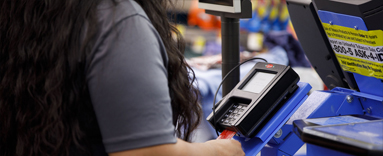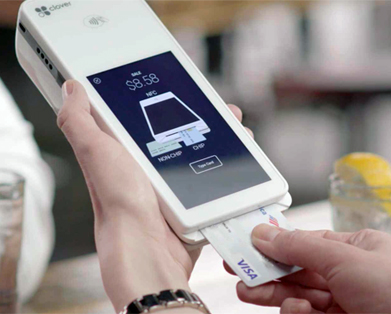Alternative payment methods – a lengthy title for an even lengthier list of ways you can pay for goods and services. Anything other than cash and bank cards, like digital wallets, mobile payments, cryptocurrencies, prepaid cards, bank transfers, etc. are considered alternative payment methods (APMs).
But don’t let the word “alternative” confuse you: nowadays, it’s not about something unconventional, but rather about a plethora of options for making a payment. These, and other factors, are what contribute to payment alternatives’ glow up in recent years and the nearest future. The factors, as well as possible risks, is what we’re taking a look at in the article.
A variety of options for people from different walks of life
The staggering amount of alternative payment methods available is a testament that both traditional banks and cash payments have their issues. Uncovering the basic APM types allow getting to the core of these problems.
Take e-wallets like Skrill, for instance, which basically imitate your physical wallets in an online space. The great thing about them is convenience: all the customer’s financial data is stored in one place, ready to be used for fast shopping.
Services like Alipay or Apple Pay are great for seamless payments – just scan a QR-code/place your phone near the POS-terminal for a quick purchase. Not to mention that many e-stores already offer their clients to make purchases using alternative payment methods. As of 2018, 35% of merchants worldwide accepted Apple Pay, 25% – Google Pay, and 10% – Alipay. And by 2023, it is estimated that digital wallets will become the most popular online payment method then all other payment methods combined, reaching a 52,2% market share.
The situations described show a clear pattern – these alternative payment services use a tech-savvy approach, making them more user-friendly and convenient for everyday tasks. Unfortunately, not all traditional banks can offer the same services, not always having a technological background for it.
The usage of APMs is pretty diverse among industries and countries. Alipay is most commonly used by websites in China, with the US and Hong Cong taking second and third place respectively. It is utilized primarily by industries like electronics and technology, lifestyle, and e-commerce. Skrill is most often accepted on websites in the US, Germany, and Russia, common among gambling, electronics, and finance industries. The use of Sofort dominates on German websites, among, electronics, lifestyle and travel industries. As for Ideal, it is prevalent among electronics, science and education, as well as health industries, most often used in the US, Netherlands, and the UK.
Let’s get back to Alipay – the platform grows each year, reaching over 1,3 billion annual active users in March 2020, compared to 700 million users in 2018. Overall, it is forecasted that by 2025 the value of the mobile payments market will hit $12,407. 5 billion, proving that the APMs work out just well and have the necessary tools.
But there is another side to the coin, as some people don’t have bank accounts, but still need to pay for services. Some APMs offer solutions for that as well. Take Boleto – a Brazilian payment method: customers are given a payment slip, which they can use later to pay for goods with cash at authorized processors like post offices, shops, and banks, or just complete the purchase on the internet.
And this shows another benefit to the alternative payment methods. Some of them are being developed within a specific region, not catering to the entire world, and attending to the primary needs of the region’s locals, which is good for wider coverage and better conversions. At the end of the day, APMs provide an opportunity for e-commerce to lower localization costs, as businesses do not need to look for local partners.
The demand from new banking users drives the change
According to the World Demographics Profile, the number of people aged 15 to 24 made up 15,77% of the total population in 2018. As for other demographics, a quarter of the population was no younger than 14, people aged 25 to 54 totaled to 41,03%, and people aged 55 to 64 years – 8,84%. Only 9% of the population was older than 65 tears as of 2018.
Considering the statistics above, we can expect a rise in alternative payment methods’ usage in the years to follow. A consumer research conducted in 2019 revealed that both Gen Z (people born between 1997 and 2012) and Millennials (people born between 1981 and 1996) have no problem using APMs. For instance, 40% of them commonly use in-app payments, and 34% – digital wallets. Meanwhile, in-app payments are a primary choice for only 24% of consumers aged 40 to 54 and 16% to people aged between 55 and 74 respectively.
It seems that for younger generations a preference for alternative payment methods is a matter of convenience: some find it easier and less time-consuming to use APMs, than deal with brick-and-mortar banks.
Another key is that younger generations are more tech-savvy and internet-enticed, with 2,5 and almost 3 hours spent on social media per day by Millennials and Gen Z accordingly. These people are more used to solve their issues online than other generations, and some of them are more educated on the ways they can make the banking process less time-consuming. Not to mention that social media is a great way for APM companies to reach new customers.
The need to go cashless
It’s undeniable that current events have drastically changed the way people go about their daily tasks, banking included. When the chain of lockdowns was set globally, many customers turned to online shopping instead of crowded places.
Another subsequent change happened in regards to how the physical payments are made: many people avoided using cash at the start of the pandemic, fearing the virus spread. A survey conducted by Mastercard in April showed that 79% of buyers globally went contactless.
The companies noticed the change as well: 69% of American retailers confirmed the increase in contactless payments. As for consumers, 19% of the respondents said that it was their first no-touch payment in the stores. 57% of them believed they would continue using these payment methods.
Thus, the need to go cashless warmed up many people to trying out alternative payment methods and sticking with them, as many countries had to aggravate the lockdown measures for the second time at the end of 2020.
Challenges the alternative payment methods should still face
For online merchants, especially those with potential customers scattered around the world, setting up an APM on their own is not only difficult and costly, sometimes more expensive than traditional payment methods, not to mention the technical complexity. Thus, not all businesses are ready to work with alternative payment methods.
Although there are plenty of advantages to APMs, they still compete against major credit card companies like Visa, Mastercard, American Express, Diners Club International, and others. And this is, perhaps, one of the main issues with alternative payment methods. While there are some APMs like PayPal and AliPay, which are available in many countries, most of the alternative payment methods are used locally, limited by the country/region they’re based in.
On the other hand, these alternative payment methods usually adjust to their local customers’ needs. And if they decide to go global, their services on a regional level may suffer, as APMs will try to cater to a wider audience.
Finding out how to balance this issue is what every AMP company needs to figure out at some point. For one, they can partner with payment service providers, like Genome, to reach as many merchants as possible. Right now, Genome offers over 25 alternative payment methods like Alipay, Skrill, Paysafecard, Boleto, WeChat Pay, Sofort, Ecopayz, Ideal, and many others, so that our merchants can satisfy as many consumers’ AMP needs as possible.
This article was originally published By Finance Magnates Staff, financemagnates.com.










